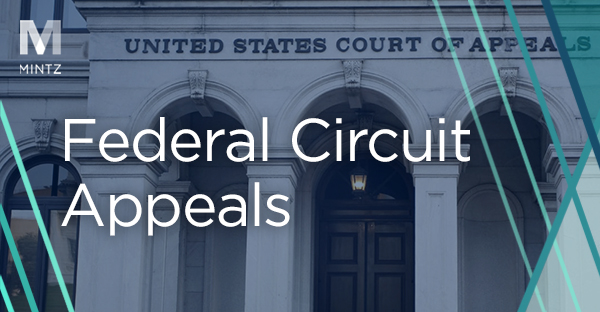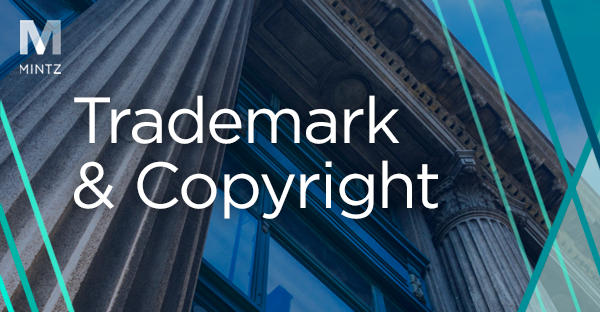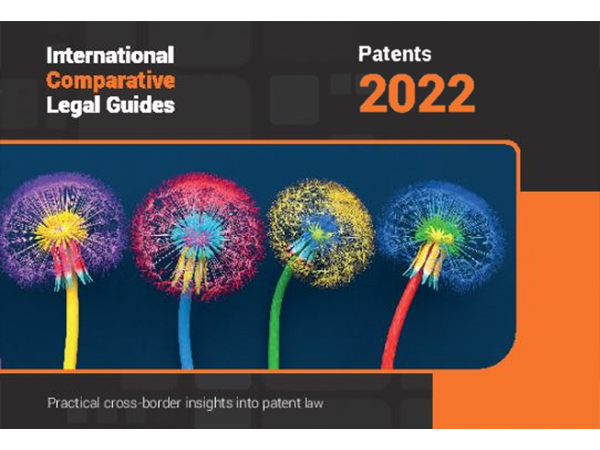
Intellectual Property
Viewpoints
Filter by:
Best Practices for Clearances and Opinions
March 31, 2021 | Blog | By Lisa Adams, Alexander Roan
Last week, Mintz Member Lisa Adams moderated a panel discussion between in-house attorneys that covered best practices for conducting patent clearances and obtaining non-infringement and invalidity opinions. The panel discussion, which was hosted by the Boston Patent Law Association, focused on key practical considerations that ensure product clearances and opinions are used as effective tools in a comprehensive intellectual property protection strategy.
Read more
Good News/Bad News: Patent Owners and Petitioners Both Make Gains in CAFC Uniloc Decision
March 31, 2021 | Blog | By William Meunier , Sean Casey
The Federal Circuit’s recent Uniloc 2017 v. Facebook Inc. decision is a mixed bag of good and bad news for both patent owners and inter partes review petitioners. On the plus side for patent owners (but not for petitioners), the Federal Circuit determined that the so-called “No Appeal” provision does not necessarily apply to 35 U.S.C. § 315(e)(1), and, therefore, a patent owner may still appeal a Patent Trial and Appeal Board determination that a petitioner is not estopped from maintaining an IPR under § 315(e)(1).
Read more
USPTO Provides Guidance on Conducting an Effective Patent Examiner Interview
March 25, 2021 | Blog | By Christina Sperry
Examiner interviews are often indispensable to advance prosecution of a U.S. patent application, and interviews can help advance prosecution in the vast majority of applications. The Midwest Regional U.S. Patent and Trademark Office (USPTO) held a webinar on March 24, 2021 entitled “Conducting an Effective Patent Examiner Interview,” featuring Vivek Koppikar, Special Advisor to the Regional Director of the Midwest Regional Office.
Read more
Obviousness-Type Double Patenting and Divisional Applications in Canada
March 23, 2021 | Blog | By Andrew D. Skale
Obviousness-type double patenting (“OTDP”) arises when two or more patents or applications include claims that, while not being identical, are not patentably distinct from each other. In the U.S., OTDP rejections can be overcome by filing a terminal disclaimer that limits the term of the rejected application to be no greater than the term of the disclaimed patent.
Read more
Expediting PTAB Appeals Using the Fast-Track Program
February 26, 2021 | Blog | By Christina Sperry
The U.S. Patent and Trademark Office (USPTO) recently released statistics about its Fast-Track Appeals Pilot Program. The program went into effect on July 2, 2020 and is currently slated to run until the earlier of July 2, 2021 and 500 appeals being accepted into the program.
Read more
Doctrine of Assignor Estoppel to be Reviewed by U.S. Supreme Court
February 25, 2021 | Blog | By Christina Sperry, Monique Winters Macek
On January 8, 2021, the U.S. Supreme Court agreed to hear a case calling for it to abolish or limit the doctrine of assignor estoppel. See Minerva Surgical, Inc. v. Hologic, Inc., et al., No. 20-440, 2021 WL 77248 (U.S. Jan. 8, 2021). Mintz previously discussed the Federal Circuit’s decision, which found assignor estoppel to be applicable.
Read more
Design Patent Registrations after Brexit and Updates to Design Rights in China
February 25, 2021 | Blog | By Michael Van Loy, Joshua Berk
As we noted in Are Design Patents Missing From Your IP Portfolio, a design patent protects the visual ornamental characteristics of an article and can be an important part of a company’s patent portfolio. Like other patent rights, design patent applications may be filed internationally to expand the number of countries in which a company’s designs are protected.
Read more
Copy Cats II: Nexus of Copying Required to Substantiate Non-Obviousness
February 17, 2021 | Blog | By Ken Jenkins
On January 28, 2021, the Federal Circuit affirmed the general principle that the mere fact of copying by an accused infringer is insufficient to rebut a charge of obviousness (L’Oreal USA, Inc. v. Olaplex, Inc.; appeal from PGR2018-00025; non-precedential).
Read more
Understanding Chinese Voluntary Divisional Application Patent Practice
February 10, 2021 | Blog | By Andrew D. Skale
For many parts of the world, a voluntary divisional application (known as a continuation application in the U.S.) may be filed at any time during the pendency of any parent application. The claims in the voluntary divisional application must be supported by the original specification and cannot introduce any new matter.
Read more
Federal Circuit Says Automated Systems Are Not Abstract when Tied to Improvements
February 9, 2021 | Blog | By Michael Van Loy, F. Jason Far-hadian, Mark Hammond
It is now over 10 years since the Bilski decision was handed down by the United States Supreme Court. In that decision and several other decisions that followed (i.e., Mayo, Myriad, and Alice), the Supreme Court pronounced patent claims directed to abstract ideas not eligible for patent protection.
Read more
Expediting Patent Prosecution with the Newly Extended Collaborative Search Pilot Program
February 8, 2021 | Blog | By Christina Sperry
On February 4, 2021 the U.S. Patent and Trademark Office (USPTO) extended for two years the expansion of the Collaborative Search Pilot Program (CSP), which began in 2015 and is now scheduled to end October 31, 2022.
Read more
Expediting Patent Prosecution After An Advisory Action
January 28, 2021 | Blog | By Christina Sperry
It can be difficult to advance prosecution of a U.S. patent application efficiently and effectively after prosecution has been closed and an Advisory Action has been mailed. Various U.S. Patent and Trademark Office (USPTO) programs are available to expedite prosecution (see Mintz’s previous article about speeding prosecution), but a final Office Acton and then an Advisory Action being mailed makes most of those programs unavailable.
Read more
Year in Review: The Most Popular IP Posts of 2020
January 14, 2021 | Blog | By Christina Sperry
As 2021 begins and intellectual property (IP) strategies are being developed for the new year, it is a good time to reflect on what IP issues were prominent in 2020. According to many readers, hot topics included Chinese foreign filing licenses, patenting involving either artificial intelligence (AI) or COVID-19, inter partes review, and attorney fee awards.
Read more
The Trademark Modernization Act Establishes New Trademark Cancellation Procedures
January 12, 2021 | Blog | By Michael Graif , Williams Dixon
On December 27, 2020, the Trademark Modernization Act of 2020 (“the Act”) became law as part of the Consolidated Appropriations Act, 2021.
Read more
An Informative PTAB Decision on Fintiv Factors
January 8, 2021 | Blog | By Brad M Scheller
The U.S. Patent Trial and Appeal Board (“PTAB”) recently designated its decision in Snap, Inc. v. SRK Technology LLC (§ II.A), IPR2020-00820, Paper 15 (Oct. 21, 2020) (“Snap”) as being informative regarding the Fintiv factors analysis.
Read more
Protecting Lawful Streaming Act Signed Into Law
January 5, 2021 | Blog | By Seth Davidson
One of the provisions included in the Consolidated Appropriations Act that President Trump signed into law on December 27, 2020 addresses the so-called “felony streaming” loophole in the Copyright Act and criminal code.
Read more
Congress Creates a Copyright Claims Board for Adjudication of Small Copyright Infringement Claims
January 5, 2021 | Blog | By Seth Davidson
Following up on our initial report last year on the possible creation of a Copyright Claims Board, we can now confirm the creation of that Board. The Consolidated Appropriations Act signed into law by President Trump on December 27, 2020 incorporates the CASE Act, establishes this new Copyright Claims Board (CCB) within the Copyright Office.
Read more
Overview of USPTO Webinar: Understanding Patenting in China
December 17, 2020 | Blog | By Christina Sperry
Patent protection in China has been a hot topic of discussion and strategy for U.S. companies. The U.S. Patent and Trademark Office (USPTO) China team within the USPTO's Office of Policy and International Affairs is a dedicated group of intellectual property (IP) attorneys and specialists with knowledge and experience on China manners from the U.S. law perspective as well as the Chinese law perspective.
Read more
FDA Issues New Guidance on Drug Naming
December 17, 2020 | Blog | By Karen K. Won
Last week, the Food and Drug Administration (“FDA”) issued a pair of Guidance for Industry documents outlining best practices for developing proprietary names (i.e. brand names) for prescription and nonprescription human drug products.
Read more
Is This Seat Taken? A Chinese IP Court Proclaims Its Authority to Declare Global FRAND Terms
December 7, 2020 | Blog | By Michael Renaud, James Wodarski, Matthew Galica
A Chinese Court recently decided that it has the willingness, and jurisdiction, to set a global licensing rate that is fair, reasonable, and non-discriminatory (“FRAND”) for standard essential patents (“SEP”).
Read more
Explore Other Viewpoints:
- Data Centers & Digital Infrastructure
- AI: The Washington Report
- Antitrust
- Appellate
- Arbitration, Mediation & Alternate Dispute Resolution
- Artificial Intelligence
- Awards
- Bankruptcy & Restructuring
- California Land Use
- Cannabis
- Class Action
- Complex Commercial Litigation
- Construction
- Consumer Product Safety
- Corporate Governance (ESG)
- Cross-Border Asset Recovery
- DEI Legal Developments
- Debt Financing
- Direct Investing (M&A)
- Diversity
- EB-5 Financing
- Education & Nonprofits
- Employment
- EnforceMintz
- Environmental (ESG)
- Environmental Enforcement Defense
- Environmental Law
- Environmental, Social, and Corporate Governance (ESG)
- FDA Regulatory
- False Claims Act
- Federal Circuit Appeals
- Financial Institution Litigation
- Government Law
- Growth Equity
- Health Care
- Health Care Compliance, Fraud and Abuse, & Regulatory Counseling
- Health Care Enforcement & Investigations
- Health Care Transactions
- Health Information Privacy & Security
- IP Due Diligence
- IPRs & Other Post Grant Proceedings
- Immigration
- Impacts of a New US Administration
- Insolvency & Creditor Rights Litigation
- Institutional Investor Class Action Recovery
- Insurance & Financial Services
- Insurance Consulting & Risk Management
- Insurance and Reinsurance Problem-Solving & Dispute Resolution
- Intellectual Property
- Investment Funds
- Israel
- Licensing & Technology Transactions
- Life Sciences
- Litigation & Investigations
- M&A Litigation
- ML Strategies
- Medicare, Medicaid and Commercial Coverage & Reimbursement
- Mergers & Acquisitions
- Patent Litigation
- Patent Prosecution & Strategic Counseling
- Pharmacy Benefits and PBM Contracting
- Portfolio Companies
- Privacy & Cybersecurity
- Private Client
- Private Equity
- Pro Bono
- Probate & Fiduciary Litigation
- Products Liability & Complex Tort
- Projects & Infrastructure
- Public Finance
- Real Estate Litigation
- Real Estate Transactions
- Real Estate, Construction & Infrastructure
- Retail & Consumer Products
- Securities & Capital Markets
- Securities Litigation
- Social (ESG)
- Special Purpose Acquisition Company (SPACs)
- Sports & Entertainment
- State Attorneys General
- Strategic IP Monetization & Licensing
- Sustainable Energy & Infrastructure
- Tax
- Technology
- Technology, Communications & Media
- Technology, Communications & Media Litigation
- Trade Secrets
- Trademark & Copyright
- Trademark Litigation
- Unified Patent Court (UPC)
- Value-Based Care
- Venture Capital & Emerging Companies
- White Collar Defense & Government Investigations
- Women's Health and Technology









